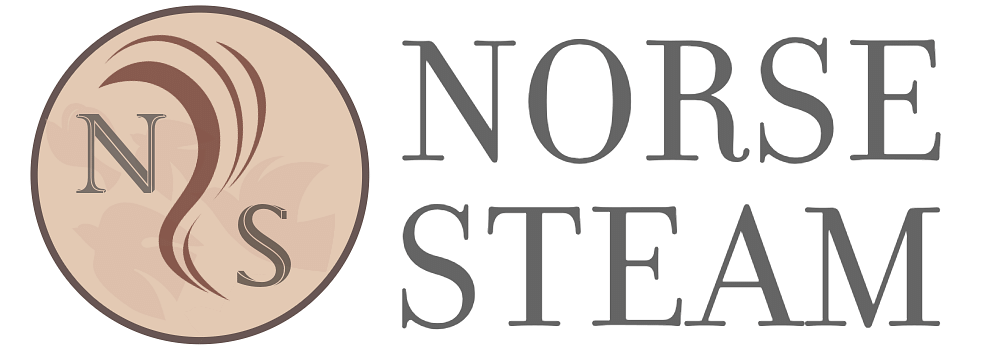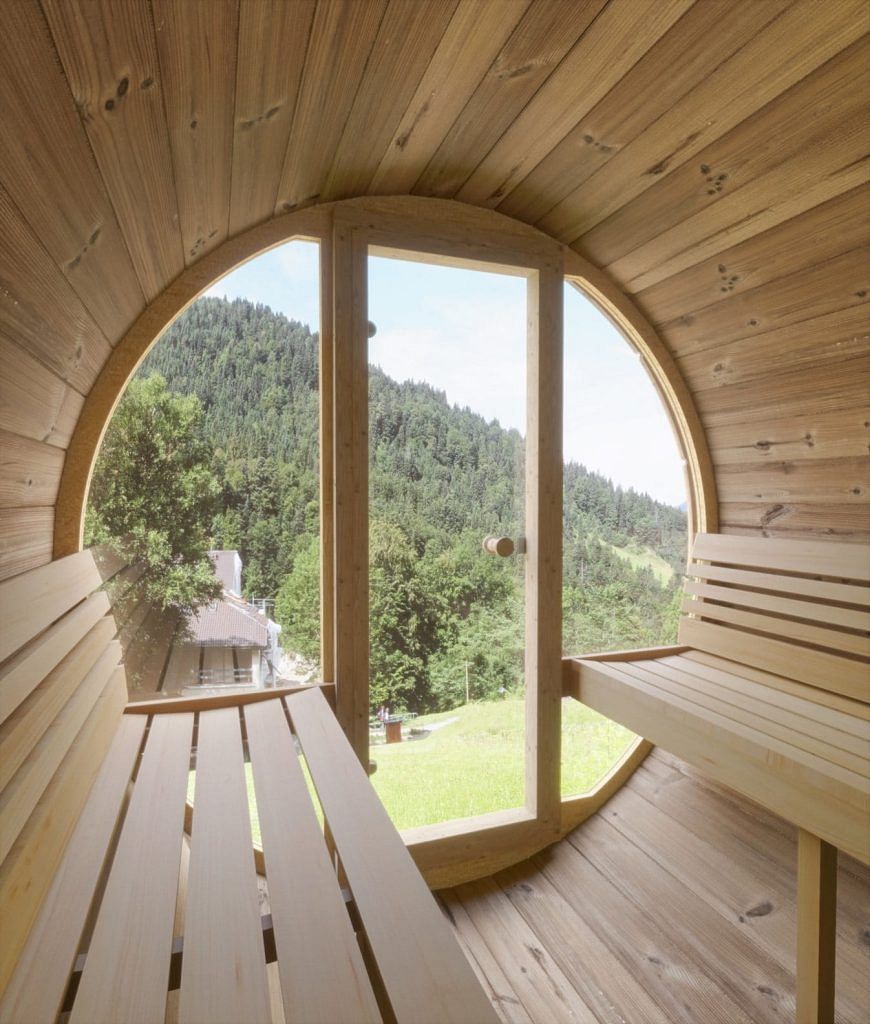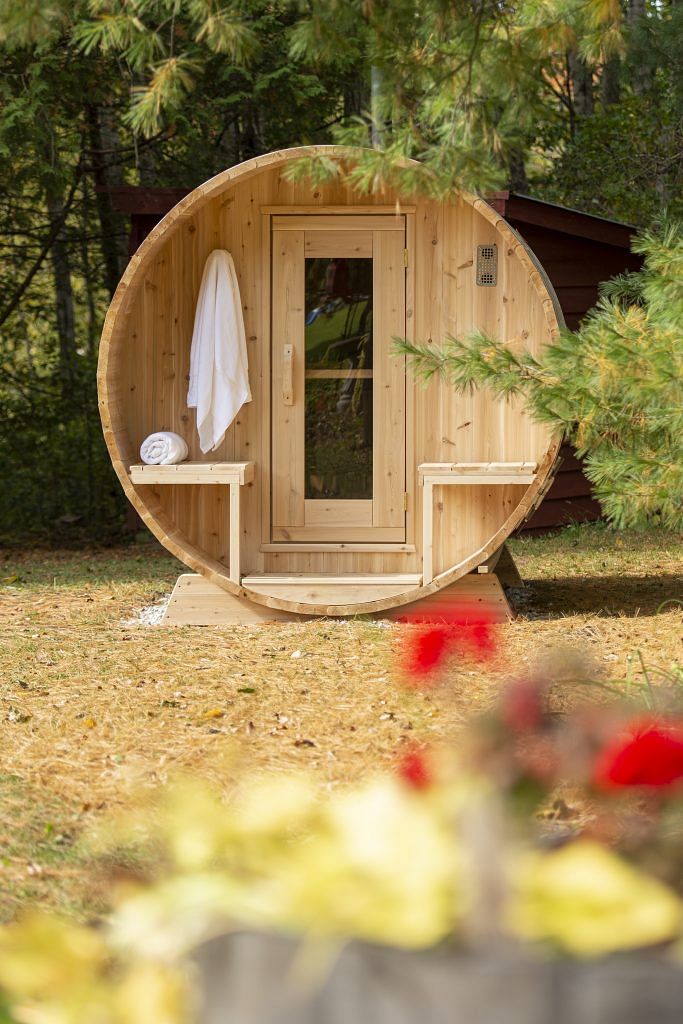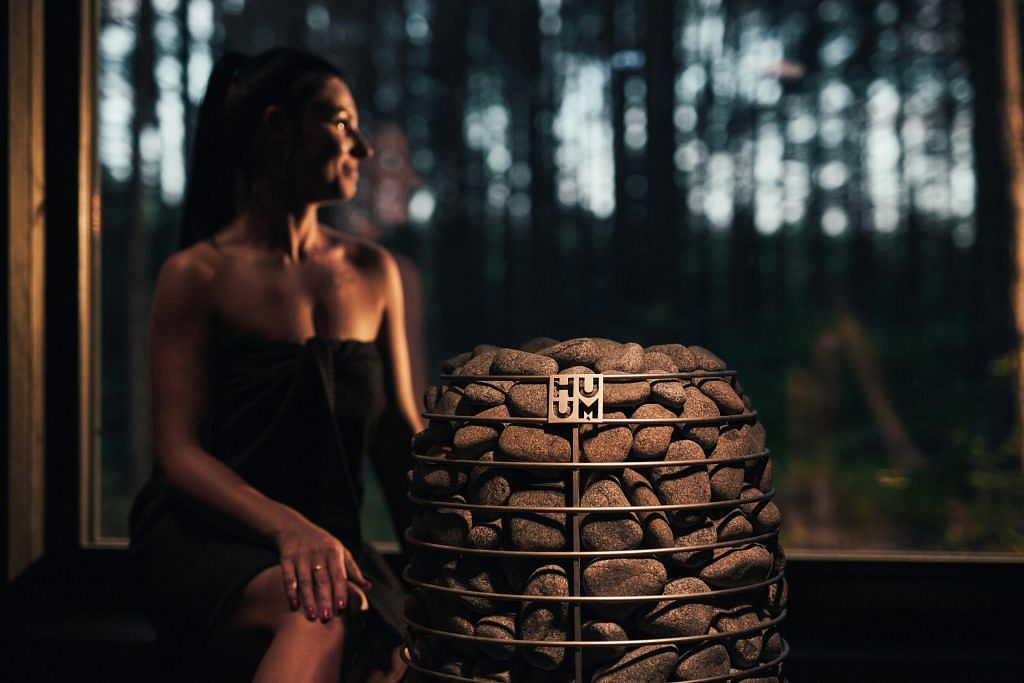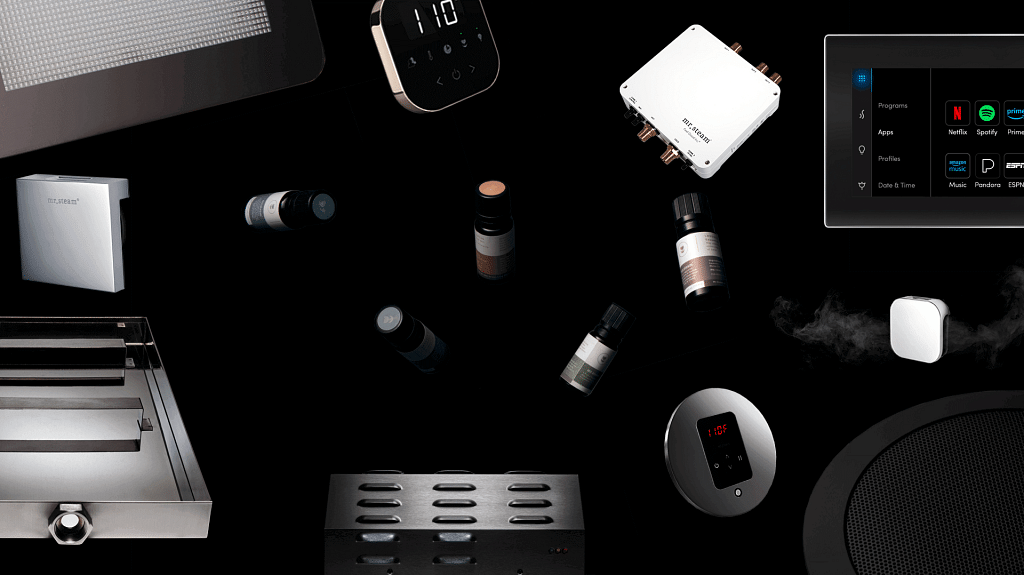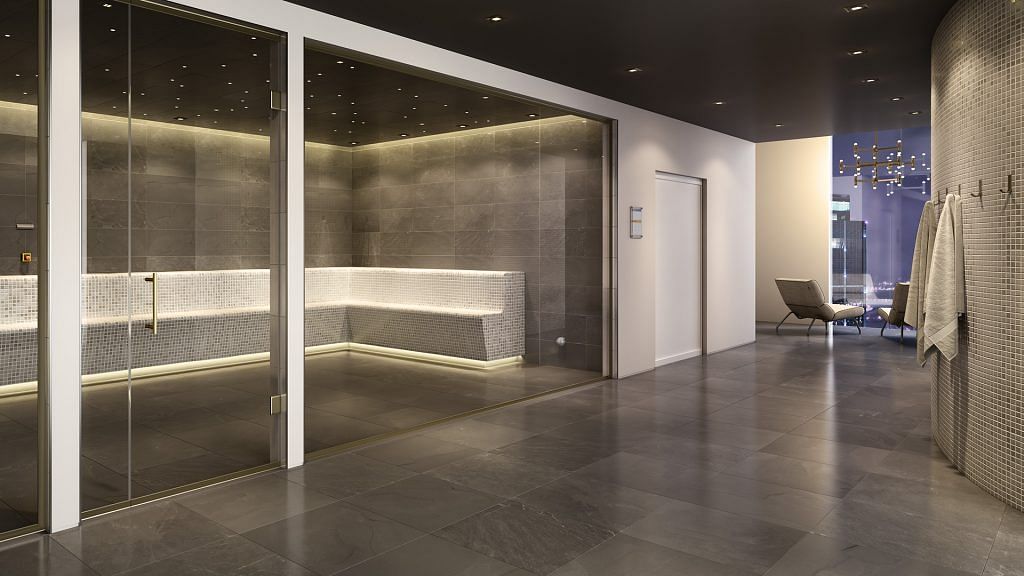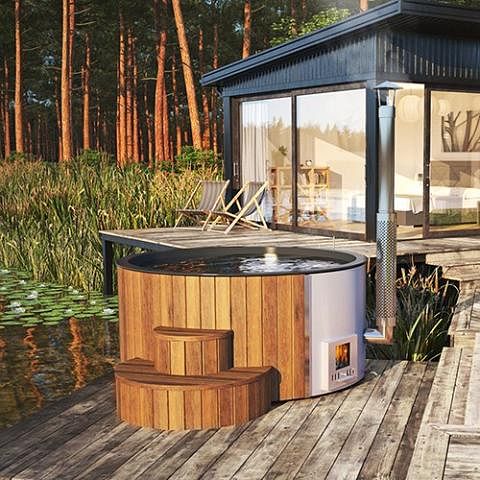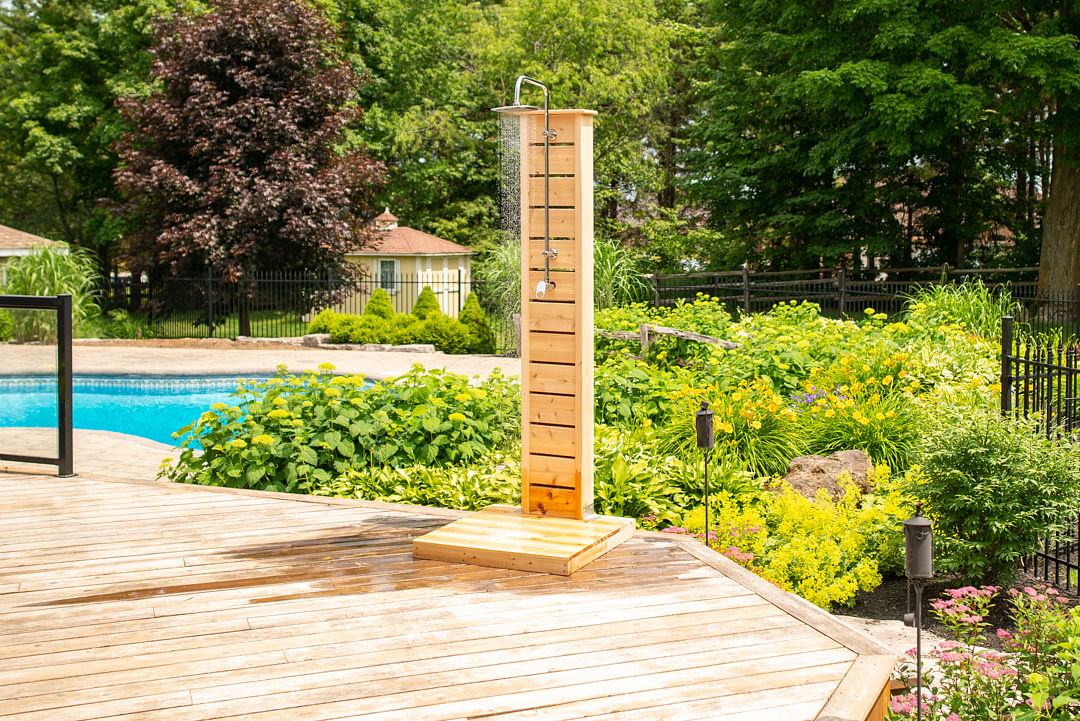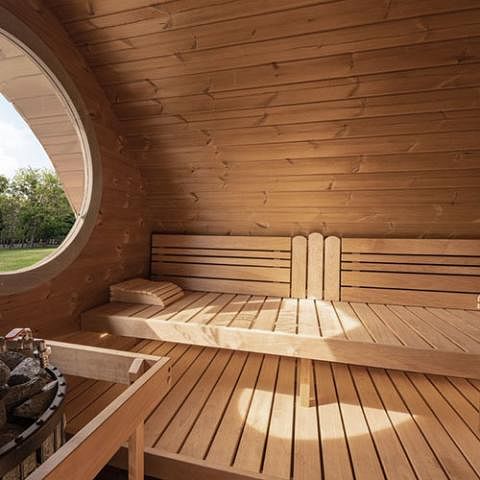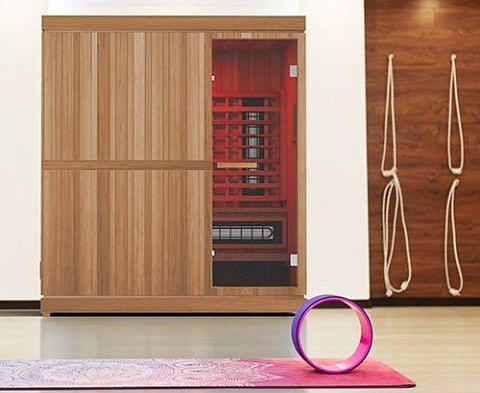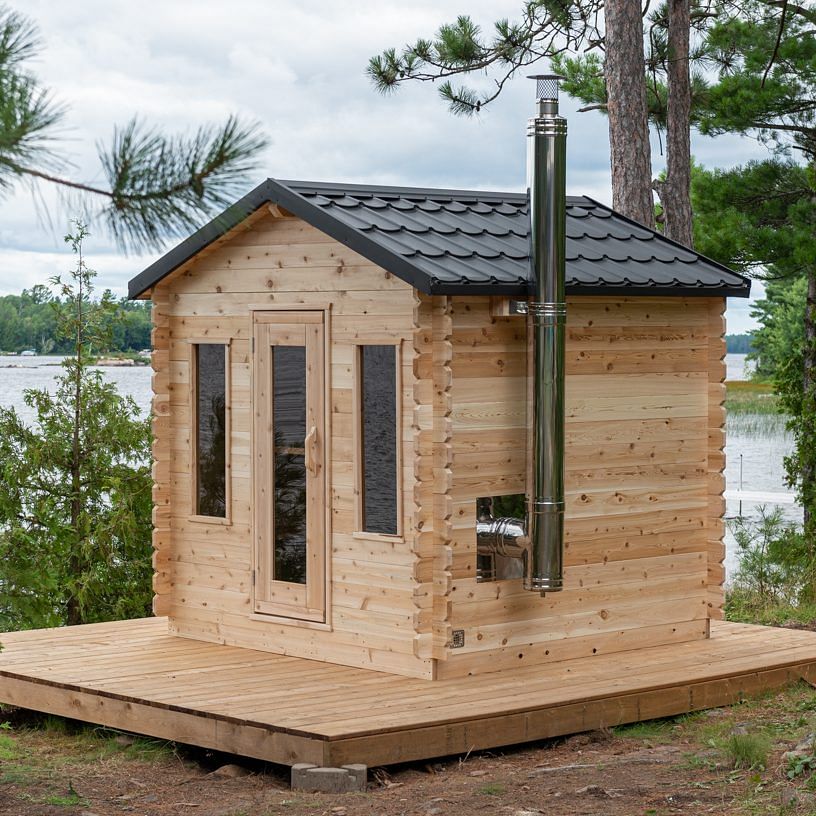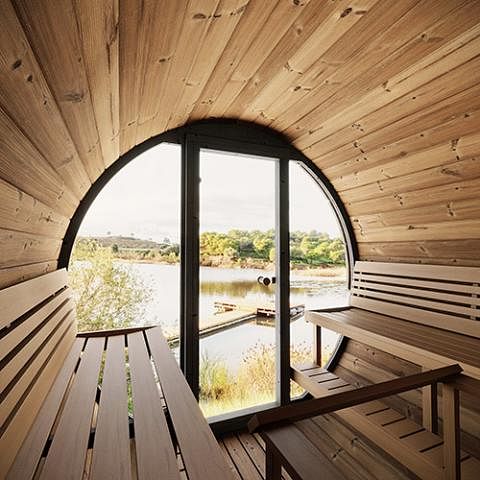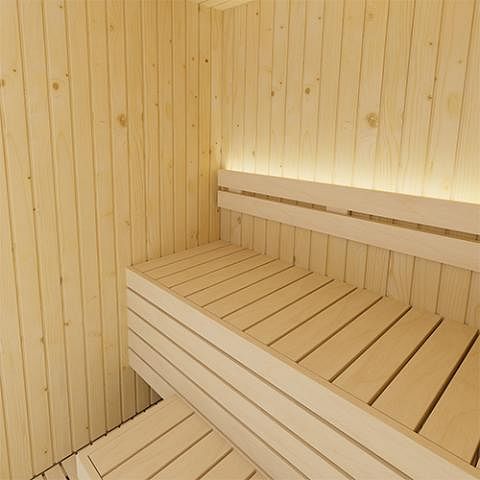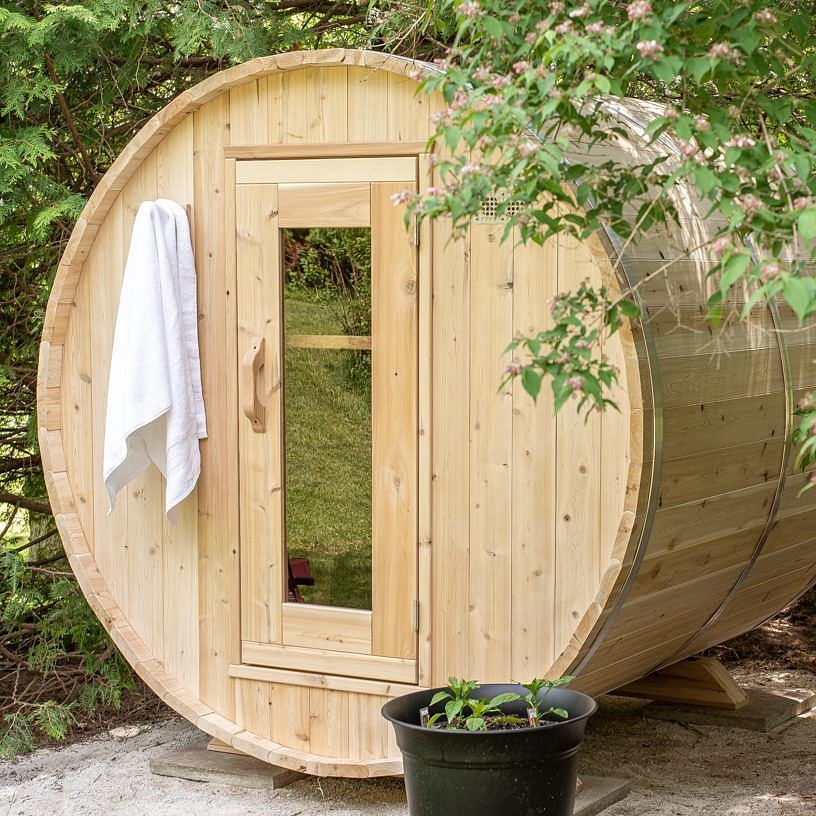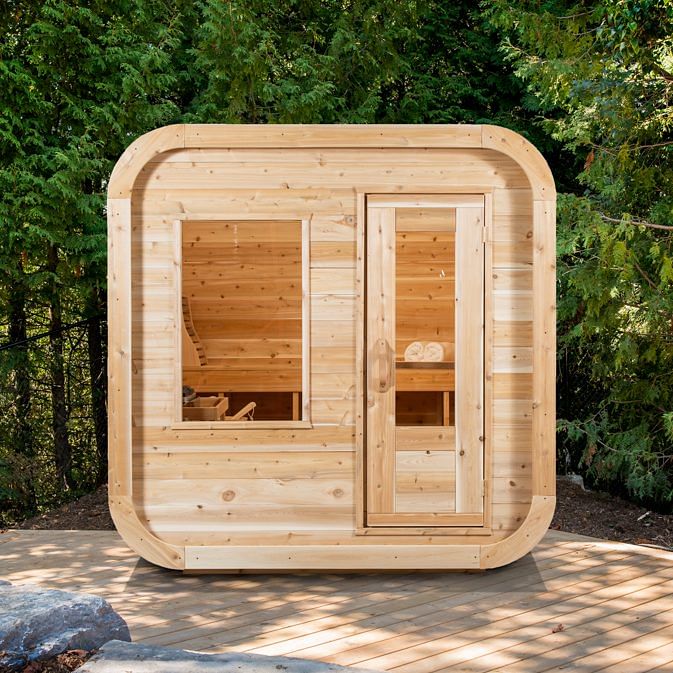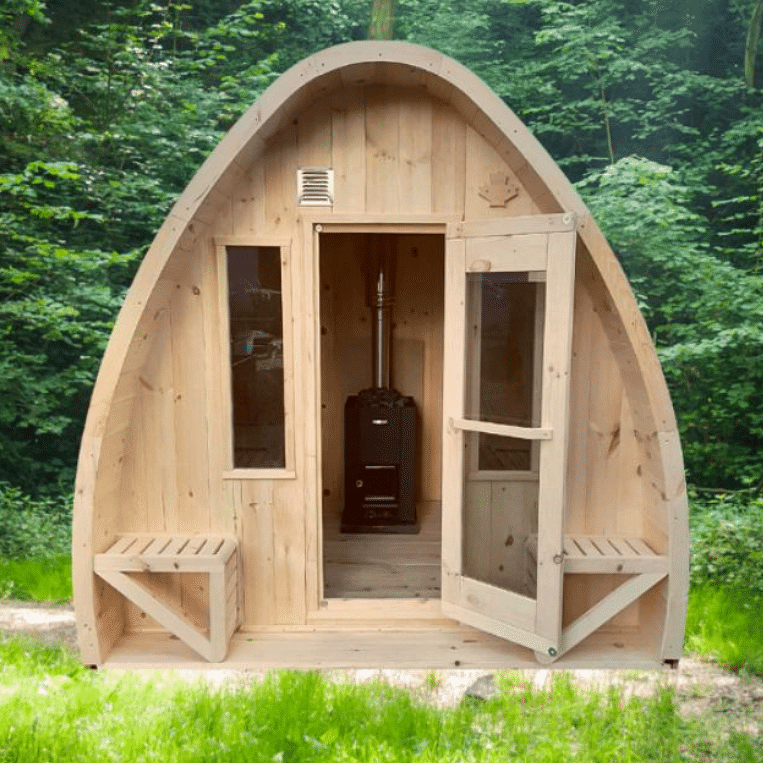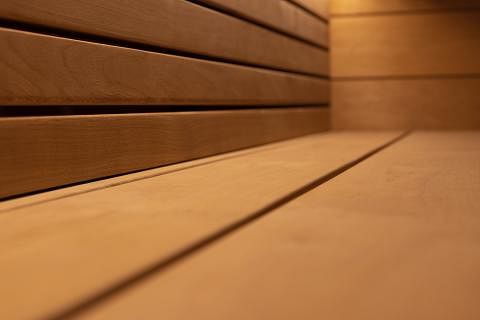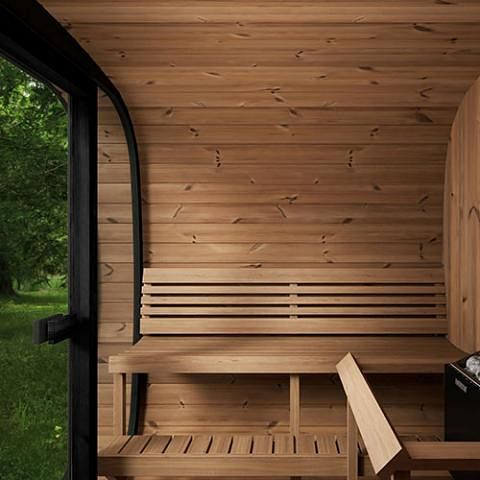Our Sauna Blog, Sauna
What is the Best Wood for Saunas? Complete Guide for 2024
Follow this comprehensive guide to help you choose the best wood for the sauna you want to build. The guide will address things like budget, durability and much more.
Creating your ideal sauna experience requires careful planning, and wood selection is a crucial step. This guide provides a thorough examination of popular sauna wood options, analyzing their properties to help you make an informed decision. We’ll explore factors like heat resistance, moisture resistance, durability, and aesthetics, ensuring you find the perfect wood to match your specific needs and preferences. Whether you’re building an indoor sanctuary or an outdoor oasis, this guide equips you with the knowledge to select the optimal wood for a comfortable, safe, and long-lasting sauna.
What to Consider When Choosing a Wood for Sauna?
Building a sauna is an investment in relaxation and wellness. Selecting the right wood is crucial for creating a safe, enjoyable, and long-lasting experience. Here’s a breakdown of key factors to consider when choosing your sauna wood:
Wood for Traditional vs Infrared Saunas
This point is important because different sauna types operate at varying temperatures. Traditional saunas reach much higher temperatures than infrared saunas. The wood you choose needs to be able to withstand the expected heat without warping, cracking, or releasing harmful substances. Read more about the difference between infrared and traditional saunas here
Antimicrobial
Saunas are hot and humid environments, creating a breeding ground for mold and mildew. Antimicrobial properties in the wood help suppress the growth of these microbes, promoting a clean and hygienic space.
Texture
Comfort is paramount in a sauna! The wood’s texture will directly impact your experience. You’ll want a smooth surface that feels pleasant against bare skin, especially for areas like benches and backrests. Rough or splintery woods can detract from the relaxation factor.
Water Resistance
Saunas are constantly exposed to moisture. Water resistance in the wood prevents warping, rotting, and structural damage over time.
Mold Resistance
Similar to water resistance, mold resistance is crucial. Mold spores can thrive in hot and humid environments. Choosing wood with natural anti-fungal properties helps minimize the risk of mold growth, which can be harmful to your health and unpleasant to breathe in.
Heat Resistance
Heat resistance ensures the wood can handle the sauna’s high temperatures without warping or cracking. This is especially important for traditional saunas that reach very high temperatures. Read more about sauna temperature here
Durability
A sauna is a long-term investment. Selecting durable wood ensures it can withstand frequent use and harsh conditions over an extended period. Durable wood will maintain its structural integrity and aesthetic appeal for years to come.
Smell
Some woods emit a pleasant aroma when heated, adding to the overall sauna experience. Conversely, some people may prefer a neutral smell. The natural fragrance of the wood is a factor to consider based on your personal preference.
Visual Appearance
The wood you choose will significantly impact the aesthetics of your sauna. Different wood species offer a variety of colors and finishes. Consider the overall design you envision for your sauna space.
Price
Wood prices can vary depending on the species, quality, and availability. Understanding the price range of different options will help you make an informed decision that fits your budget.
Placement
The sauna’s location plays a role in wood selection. Some woods are better suited for indoor or outdoor environments depending on their resistance to moisture, insects, and temperature fluctuations common in specific regions. Additionally, lighter colored woods can create a feeling of spaciousness in smaller saunas.
Aspen
Aspen is a popular choice for saunas, particularly in North America. Here’s how it measures up against the criteria we discussed:
- Heat Resistance: Aspen performs well in infrared saunas due to their lower operating temperatures. In traditional saunas, it might not be the most ideal choice due to its slightly lower heat tolerance compared to Cedar or Hemlock.
- Antimicrobial: While not the strongest contender, Aspen possesses some natural antimicrobial properties, which helps to an extent. Regular cleaning and proper ventilation are still crucial.
- Texture: Aspen shines in this category. It has a very smooth, fine-grained texture that feels comfortable and gentle against bare skin, making it a great choice for benches and backrests.
- Water Resistance: Aspen’s water resistance is decent, but not exceptional. Regular maintenance and ensuring proper ventilation are essential to prevent warping and moisture damage.
- Mold Resistance: Similar to water resistance, Aspen’s mold resistance is moderate. Consistent cleaning and ventilation are key to prevent mold growth.
- Durability: Aspen is a moderately durable wood. With proper care and maintenance, it can last for many years. However, it may not be as resilient as some other options under frequent use.
- Smell: Aspen has a very neutral smell, making it a perfect choice for those who prefer a scent-free sauna experience or have respiratory sensitivities.
- Visual Appearance: Aspen has a beautiful light-colored finish that brightens the sauna space and creates a feeling of spaciousness, especially ideal for smaller saunas.
- Price: Aspen is generally a more budget-friendly option compared to some other sauna woods.
- Placement: Aspen is best suited for indoor saunas due to its moderate water and mold resistance.
Cedar
Cedar, particularly Western Red Cedar, is a beloved choice for saunas and for good reason. Let’s see how it stacks up against our selection criteria:
- Heat Resistance: Cedar excels in this category. It has exceptional heat resistance, making it perfectly suited for both traditional and infrared saunas. It can handle high temperatures without warping or cracking.
- Antimicrobial: Western Red Cedar is a champion in this area. It naturally contains chemicals called thujaplicin which inhibit the growth of mold, mildew, and bacteria. This contributes to a cleaner and more hygienic sauna environment.
- Texture: Cedar offers a smooth texture with a slight variation in grain. While not quite as fine-grained as Aspen, it’s still comfortable against the skin, especially after sanding and finishing.
- Water Resistance: Cedar is naturally water-resistant, making it ideal for withstanding the constant moisture in a sauna. This helps prevent warping and rotting over time.
- Mold Resistance: As mentioned earlier, Cedar’s natural antimicrobial properties extend to mold resistance. This reduces the risk of mold growth, promoting a healthier sauna environment.
- Durability: Cedar is a highly durable wood, known to last for decades with proper care and maintenance. It can withstand frequent use and harsh conditions.
- Smell: Western Red Cedar is famous for its pleasant, aromatic scent when heated. This adds to the sensory experience for many sauna users. However, some may prefer a neutral aroma.
- Visual Appearance: Cedar offers a beautiful reddish-brown hue that adds a warm and classic touch to your sauna.
- Price: Cedar tends to be on the higher end of the price spectrum compared to some other options.
- Placement: Western Red Cedar is a versatile choice, well-suited for both indoor and outdoor saunas in North American climates due to its excellent moisture resistance and durability.
Pine
Pine is a cost-effective choice for saunas, but it’s important to understand its strengths and weaknesses before making a decision. Here’s how Pine fares based on our criteria:
- Heat Resistance: Pine’s heat resistance is adequate for infrared saunas with their lower temperatures. However, in traditional saunas, it might not be the most suitable option. Pine may warp or release sap at very high temperatures.
- Antimicrobial: Pine offers some level of natural antimicrobial properties, but not as strong as Cedar or Hemlock. Regular cleaning and ventilation are crucial to maintain hygiene.
- Texture: Pine can vary in texture depending on the specific species. Some varieties have a smoother texture, while others might be slightly rougher. Selecting clear, knot-free pine can help ensure a more comfortable experience.
- Water Resistance: Pine’s water resistance is moderate. It can handle some moisture exposure, but consistent maintenance and ventilation are essential to prevent warping and rot.
- Mold Resistance: Similar to water resistance, Pine’s mold resistance is moderate. Regular cleaning and ventilation are key to minimize mold growth.
- Durability: Pine is a moderately durable wood. With proper care, it can last for many years. However, it may not be as resilient as Cedar or Hemlock under frequent use.
- Smell: Some Pine varieties, especially when heated, can emit a strong sap odor. This might not be ideal for everyone.
- Visual Appearance: Pine offers a light, natural wood look with a visible grain pattern. It can create a rustic aesthetic in your sauna.
- Price: Pine is generally a very budget-friendly option compared to other sauna woods.
- Placement: Pine might be a suitable choice for indoor saunas with proper maintenance due to its moderate water resistance. However, it’s not the best choice for outdoor saunas due to potential moisture and insect issues.
Spruce
Spruce is another budget-friendly option for saunas, but like Pine, it has some characteristics to consider before deciding. Here’s how Spruce compares to our criteria:
- Heat Resistance: Similar to Pine, Spruce’s heat resistance is sufficient for infrared saunas. However, in traditional saunas with very high temperatures, Spruce might warp or release sap.
- Antimicrobial: Spruce offers some natural antimicrobial properties, but not as strong as Cedar or Hemlock. Consistent cleaning and ventilation are important to maintain a hygienic environment.
- Texture: Spruce generally has a smooth texture with a visible grain pattern. However, it can be slightly rougher than Aspen or Basswood. Sanding and proper finishing can improve comfort.
- Water Resistance: Spruce’s water resistance is moderate. It can withstand some moisture exposure, but regular maintenance and ventilation are crucial to prevent warping and rot, especially in humid environments.
- Mold Resistance: Like water resistance, Spruce’s mold resistance is moderate. Consistent cleaning and ventilation are key to minimize mold growth.
- Durability: Spruce is a moderately durable wood. With proper care, it can last for many years. However, it may not be as resilient as Cedar or Hemlock under frequent use.
- Smell: Spruce generally has a mild, neutral smell when heated. This can be a good option for those who prefer a scent-free experience.
- Visual Appearance: Spruce offers a light-colored wood with a visible grain pattern, similar to Pine. It can create a clean and natural aesthetic in your sauna.
- Price: Spruce is a budget-friendly option compared to other sauna woods.
- Placement: Spruce might be a suitable choice for indoor saunas with proper maintenance due to its moderate water resistance. However, for outdoor saunas, it’s important to consider the climate. Eastern White Spruce, for example, performs well in Eastern US and Canadian climates due to its improved moisture resistance and resistance to insects common in those regions. However, Spruce might not be the most ideal choice for outdoor saunas in very humid climates.
Hemlock
Hemlock is a popular choice for saunas and for good reason. It offers a balance of desirable qualities, making it a strong contender for both traditional and infrared saunas. Let’s delve into how Hemlock measures up against our criteria:
-
- Heat Resistance: Hemlock excels in heat resistance. It performs well in both traditional and infrared saunas, able to withstand high temperatures without warping or cracking.
- Antimicrobial: Hemlock possesses natural antimicrobial properties that help suppress the growth of mold and mildew, contributing to a clean and hygienic sauna environment. While not quite as strong as Cedar in this regard, it offers good protection.
- Texture: Hemlock has a smooth, even texture with a straight grain. This provides a comfortable feel against bare skin, making it suitable for benches and backrests.
- Water Resistance: Hemlock is naturally water-resistant, effectively handling the constant moisture present in saunas. This helps prevent warping and rotting over time.
- Mold Resistance: Hemlock’s natural antimicrobial properties extend to mold resistance, reducing the risk of mold growth and promoting a healthier sauna environment.
- Durability: Hemlock is a highly durable wood, known to last for many years with proper care and maintenance. It can withstand frequent use and the harsh conditions of a sauna.
- Smell: Hemlock generally has a very neutral smell when heated, making it a good option for those who prefer a scent-free experience. However, some users may detect a faint, pleasant aroma similar to pine.
- Visual Appearance: Hemlock offers a light, attractive reddish hue that adds a touch of warmth and elegance to your sauna space.
- Price: Hemlock falls somewhere in the middle range compared to other sauna woods. It’s generally more affordable than Cedar but pricier than some softer woods like Aspen or Spruce.
- Placement: Hemlock is a versatile choice, well-suited for both indoor and outdoor saunas in North American climates due to its excellent moisture resistance, durability, and resistance to common insects.
If you want to learn more read about our full breakdown of hemlock vs cedar for saunas.
- Heat Resistance: Hemlock excels in heat resistance. It performs well in both traditional and infrared saunas, able to withstand high temperatures without warping or cracking.
Thermowood
Thermowood is a unique choice for saunas, offering a modern twist on traditional wood. It’s not a specific wood species, but rather any type of wood that has undergone a special heat treatment process. Here’s how Thermowood stacks up against our criteria:
- Heat Resistance: Thermowood excels in heat resistance due to the heat treatment process. It performs well in both traditional and infrared saunas, able to withstand high temperatures without warping or cracking.
- Antimicrobial: The heat treatment process in Thermowood can enhance its natural antimicrobial properties to some extent. However, it may not be as effective as naturally resistant woods like Cedar or Hemlock. Regular cleaning and ventilation remain important.
- Texture: Thermowood’s texture can vary depending on the type of wood used as a base material. Generally, the heat treatment smooths out the surface, but it’s advisable to check the specific product for comfort.
- Water Resistance: Thermowood has excellent water resistance due to the heat treatment process. This significantly reduces moisture absorption and helps prevent warping and rot.
- Mold Resistance: Similar to water resistance, the heat treatment enhances Thermowood’s mold resistance. However, consistent cleaning and ventilation are still important to minimize mold growth.
- Durability: Thermowood is known for its exceptional durability. The heat treatment process removes sugars and starches that can attract insects and decay, making it highly resistant to rot and insect damage.
- Smell: Thermowood generally has a neutral smell when heated, appealing to those who prefer a scent-free experience.
- Visual Appearance: Thermowood comes in a variety of colors depending on the treatment intensity and the base wood used. It can range from a light brown to a deep chocolate color, offering a modern and sleek aesthetic for your sauna.
- Price: Thermowood can be on the higher end of the price spectrum compared to traditional sauna woods.
- Placement: Thermowood is a versatile choice, well-suited for both indoor and outdoor saunas due to its excellent moisture resistance, durability, and resistance to rot and insects.
We also wrote an extensive page about cedar vs thermowood for saunas, you might want to check it out.
Let’s Sum Up
|
Criteria |
Aspen |
Western Red Cedar |
Pine |
Spruce |
Eastern White Spruce (EWS) |
Hemlock |
Thermowood |
|
Heat Resistance |
Good (for infrared) |
Excellent |
Good (for infrared) |
Good (for infrared) |
Better than Spruce (for infrared) |
Excellent |
Excellent |
|
Antimicrobial |
Moderate |
Excellent |
Moderate |
Moderate |
Moderate |
Good |
Enhanced |
|
Texture |
Very smooth |
Smooth |
Varies (can be rough) |
Smooth |
Smooth |
Smooth |
Varies (depends on base wood) |
|
Water Resistance |
Decent |
Excellent |
Moderate |
Moderate |
Improved |
Excellent |
Excellent |
|
Mold Resistance |
Moderate |
Excellent |
Moderate |
Moderate |
Moderate |
Good |
Enhanced |
|
Durability |
Moderate |
Excellent |
Moderate |
Moderate |
Good (for EWS) |
Excellent |
Excellent |
|
Smell |
Neutral |
Pleasant aroma |
Can have strong sap odor |
Mild, neutral |
Mild, neutral |
Neutral (faint pine scent possible) |
Neutral |
|
Visual Appearance |
Light, bright |
Reddish-brown |
Light, natural |
Light, with visible grain |
Light, with visible grain |
Light, reddish hue |
Varies (depends on treatment) |
|
Price |
Budget-friendly |
Higher |
Budget-friendly |
Budget-friendly |
Moderate |
Mid-range |
Higher |
|
Placement |
Indoor |
Indoor & Outdoor |
Indoor (with care) |
Indoor (with care) |
Outdoor (EWS) |
Indoor & Outdoor |
Indoor & Outdoor |
FAQs
Many woods work well, including Aspen, or Basswood due to the lower operating temperatures, but our favorite is Spruce for infrared saunas
Cedar and Hemlock excel as the best wood for traditional saunas with their exceptional heat resistance.
Most woods are suitable with proper care. Cedar, Hemlock, Aspen, and Spruce are all popular choices for indoor saunas.
Western Red Cedar and Eastern White Cedar are great options for outdoor saunas due to their moisture resistance and durability in outdoor climates.
Spruce, Aspen, and Pine are good choices, but consider their durability for long-term value.
Similar to outdoor saunas, Western Red Cedar or Eastern White Cedar are great options for barrel saunas.
Not ideal. Hardwoods often have lower heat resistance and can be uncomfortable due to their dense texture.
Woods with natural antimicrobial properties like Cedar, Hemlock, and Thermowood are generally safe. Remember though, all saunas need proper maintenance.
Avoid woods with low heat resistance, poor water resistance, or strong odors like pressure-treated lumber or Pine with heavy sap content.
